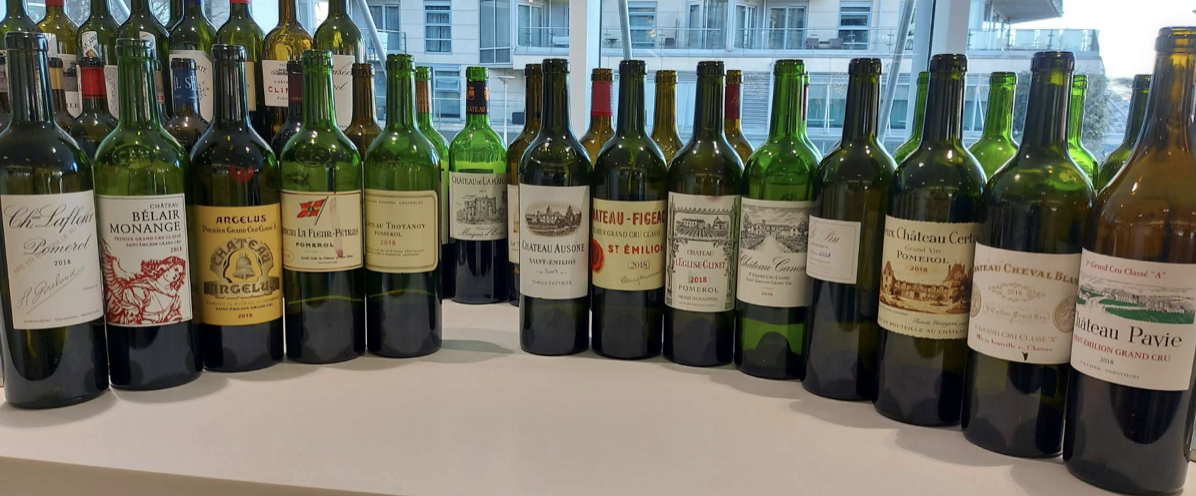

Download Vinum Market Report February 2025
Although there are some reasons to be cheerful, the wine market in January continued its journey on a gently downward path. Liv-ex (THE fine wine exchange for the trade, for those unfamiliar) reported stronger turnover in January over December, with trade value up 13.4%. Volume, representing the number of bottles traded, was up 37%. Our own numbers in January were lower but we had a great December – you can’t win them all!
Other than the Italian iterations, all the Liv-ex indices were negative relative to the previous month and bid to offer ratios also retreated a little, having been on the increase before the turn of the year. Perhaps there was a certain amount of fear factor as Trump 2.0 marched into town, shooting from the hip. We still await some certainty regarding tariffs.
I reported last month that Italy had outperformed its peers last year by decreasing less. This month it’s gone one better and posted a gain of 0.6%. Of all the indices, Italy has easily the highest bid to offer ratio (0.66 vs. and average of 0.22) which has been enjoying significant momentum since November. The early drinking vintage of 2020 performed well in both Piedmont and Tuscany and prices of Soldera across a range of vintages also faired notably well. Other names worth a mention are Gaja in Barbaresco and Bartolo Mascarello in Barolo.
Italy produces an incredible array of wines with a high quality to price ratio from both Piedmont and Tuscany, not forgetting other less famous regions too. There are also Italian wines of the very highest quality that are available at a fraction of the price of their French counterparts, although this is not a straight like for like comparison.
Over time there have been many comparisons made between Burgundy and Piedmont, in terms of smaller production levels, the intricate nature of the vineyards and terroir, the idiosyncrasies of producers etc. etc. yet the prices do not compare.
This will continue to be the case as Burgundy is well, Burgundy. Also, Pinot Noir is that much more accessible and more crowd pleasing than Nebbiolo, the primary red grapes of the respective regions. This is a perhaps an overly simplistic statement, but I believe it to be true. With Burgundy prices falling and Italian prices rising, however, maybe the price differentials will continue to narrow. In terms of pure quality, it should.
January in the wine world is dominated by the latest Burgundy releases and this year was no different. The size of the crop was generous, and the more recently published reviews were better than originally anticipated. Most merchants have reported a satisfactory campaign, which is some way short of the bun fights witnessed in happier times. Rumblings and dissent about pricing were met by producers and importers concerned about the lack of volume coming through in the ’24 vintage. One of the official Burgundy trade bodies reports volume reductions of 25% across the region, whilst some producers are claiming as much as 75%. If you have some spare cash, ’23 is probably a vintage to buy more of, for drinking and for securing allocations – it is not often you are afforded the choice in Burgundy.
As the new release Burgundy season draws to a close every year, the prospect of Bordeaux en primeurinevitably rears its (sometimes ugly) head. The early whispers emanating from Bordeaux is that this year we may be presented with a much prettier version. The Rothschild related Lafite and Mouton stables are rumoured to be preparing a very attractive, and early offering. If that is the case, the pack will no doubt follow.
En primeur has not worked for several years. The negoçe have been feeling the heat, especially the smaller ones. They are now pushing back harder than ever before, warning Chateaux that if the wine is not priced appropriately, not only will they not buy it, but they also won’t even offer it – a stark message.
It is interesting to note how badly the Second Wine 50 has performed in comparison to the other sub-indices of Bordeaux. We have noticed a pick-up in demand and prices bouncing off the bottom for Carruades de Lafite in Asia recently, and Beychevelle – both long term favourites of mainland China. With some recent positive land auction news from their beleaguered property sector recently, perhaps the snake has turned?
Increased volume in the wine market
Interest rate cuts in the U.K. and Europe
Continued strength in global stock markets (wealth creation)
Better news from China
U.S. trade tariffs
The Ukraine situation
Overpriced new releases